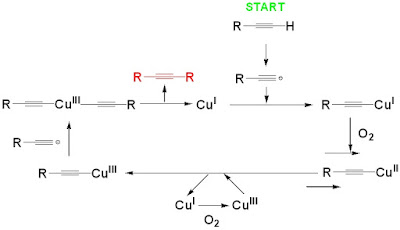Figure 1. Four Representations of one-and-the same molecule. In (1), the fluorines are shown in axial or equatorial manners. In (2), we can see the flattened cyclohexane with all the fluorines pointing out of the page. In (3), the green atoms represent the fluorine atoms. In (4), the blue atoms represent the fluorine atoms, and a 'fluorine shield' is evident. Adapted from Ref. [1].
Making an
organic compound with all the correct stereochemistry is tough, and it is even
more challenging if that conformer is the highest-energy one. If both aims can
be realized, the feat deserves recognition. The paper I share with you this
time is exactly one of these cases. No, it is not the most complicated molecule
in this universe. It just contains 6 carbons, 6 hydrogens, and 6 fluorines. Yet
the chemical compound, known as cis 1,2,3,4,5,6-hexafluorocyclohexane
(Figure 1), is the highest energy conformer, and
it is a truly fascinating organofluorine molecule.
Professor
O’Hagan’s group has synthesized this molecule, and has carried out both
practical and theoretical investigations on the interesting properties of this
molecule. [1] This compound is extreme – as I said before, fluorine atoms are
larger in size than carbon, so a number of them can essentially bury the carbon
atoms they bond to. And because this conformer has all the fluorine atoms
pointing ‘up’, so what we have here looks like a ‘fluorine shield’. Of course, if you understand conformational
analysis in organic chemistry, you certainly appreciate that the 6 fluorine atoms are placed in an
‘E-A-E-A-E-A’ (or A-E-A-E-A-E) positions, where A is axial and E is equatorial. You should try to build a molecular model
yourself, to convince yourself that it is indeed the case.
Figure 2. The synthetic sequence leading to hexafluorocyclohexane. Taken from [1].
I would like to
analyze
the synthetic
sequence towards this molecule (Figure 2). Though the chemistry is rather
traditional, the reactions illustrate the important stereochemical implications
of all these classic reactions, in particular the aim here is to get one single
correct stereoisomer.
At first sight,
the aim called for a 6-step procedure, as we needed to put in 6 fluorine atoms,
and that could go up to 12 steps if we had to activate the functional groups
into better leaving groups! The researchers have chosen an easily-available
starting material, myoinositol (2), and with a well-established 6-step procedure,
they made the meso-symmetric intermediate (3), which consisted of 2 epoxides and
an diol. This arrangement was important: because they showed 3 sets of
1,2-relationships, and indeed many known reactions were great at doing
functionalizations at 1,2-positions (dihydroxylation, iodolactonizations,
di-functionalizations with Pd complexes etc.), so hopefully this would shorten
the procedure, and the researchers were on the right track.
By first using
Deoxofluor, they installed 2 fluorines, with inversion, at the 2 hydroxy
positions to afford intermediate (4). It made sense an inversion would have taken place, because the
electrophilic sulfur on Deoxofluor would first react with the hydroxy groups to
activate that into a better leaving group, and that should do with retention of configuration, as it would not touch the carbon center at all. Only when the
nucleophilic fluorine source attached the saturated carbon center would lead to
an ultimate inversion of configuration.
Then, they used Et3N. HF to open up
simultaneously both epoxides to put on 2 more fluorine atoms onto the 6-membered
ring, giving structure 5. Both were also inversions – because the fluoride ion attacked from one
side of the ring in a ‘SN2’ (or SNi, someone might call it) manner.
But it
really was the installation of the final 2 fluorine atoms that have proved to
be tricky. Indeed, the group has expended considerable efforts to probe the
optimal conditions for installation
these 2 fluorine atoms. From
their screening experiments, they arrived at the conclusion that not every
general fluorination regents could lead to a promising result, and the
sluggishness of these reactions signified the challenge of this fluorination
reaction. At the end, they had to put the fluorine atoms on, one after another.
They first converted the corresponding hydroxyl into their triflate (-OTf)
group, and then reacted that with Et3N.HF at elevated temperature to get the
fluorine atoms incorporated, giving finally the target (1). Classic again -
the triflation did not touch the carbon center, therefore retention of
configuration. Only when the nucleophilc fluoride attacked the triflate would
lead to an inversion of stereochemistry as a result. The researchers have
carried out 19F NMR to develop further understanding of the reaction, and it
was there they discovered the key side reactions occurred, like olefin
generation due to elimination at elevated temperature.
The group has
carried out X-ray crystallographic, VT-NMR, and also modeling studies to
understand more about their new compound’s properties. The most interesting
aspect is that the compound looks like a 'fluorine shield', where all the
fluorine atoms are pointing at the same direction when the cyclohexane skeleton
is flattened. The result is a high dipole moment, where the fluorinated ring is
strongly polarized in one direction. While the structure is pretty simple, its
special properties should make it useful as components in supramolecular
architectures, for example the provision of a stable fluorine surface.
The famous
director Howard Hawks believed in the power of ‘3’. Well, with carbon, hydrogen
and fluorine, that may be the wisdom here.
by Ed Law
26/5/2015
Reference:
1. All-cis 1,2,3,4,5,6-hexafluorocyclohexane is a facially polarized cyclohexane
Neil S. Keddie, Alexandra M. Z. Slawin, Tomas Lebl, Douglas Philp and David O’Hagan*
Nature Chemistry 2015
DOI: 10.1038/NCHEM.2232


















































